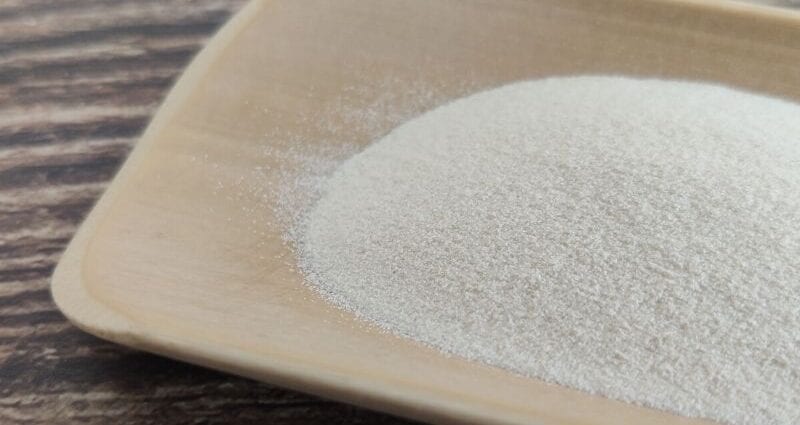Contents
Konjac (Konjac, konjac gum, konjac glucomannane, cognac, konjac flour, konjac gum, konjac glucomannane, E425)
Konjac, often referred to as cognac or konjac flour, is a perennial plant that is cultivated in a number of Asian countries (such as China, Korea, and Japan) for its edible tubers (calorizator). From the tubers , the so-called cognac flouris obtained, which is used as a food additive (thickener E425). The plant is also used as an ornamental, despite the disgusting smell it emits during flowering.
Konjac is registered as a food additive-thickener, in the international classification of food additives has the index E425.
General characteristics of Konjac (Konjac flour)
E425 Konjac (Konjac flour) has two varieties:
- ( i) Konjac gum (Konjac gum) – a powdery substance of a gray-brown color with a sharp unpleasant smell;
- ( ii) Konjac glucomannane (Konjac glucomannane) is a white – yellow powder, odorless and tasteless.
These substances are used as jelly-forming agents along with pectin, agar-agar and gelatin. Varieties of E425 have identical properties, are highly soluble in hot water, more difficult-in cold, insoluble in organic solvents.
Obtaining konjac flour: three-year-old tubers weighing more than a kilogram are cut, dried, ground and sieved. The flour is subjected to swelling in water, treated with lime milk and filtered. Glucomannan is precipitated from the filtrate with alcohol and dried. Konjac contains alkaloid substances, for this reason it requires special storage.
Benefits and harms of E425
A useful property of Konjac is the ability to absorb a liquid 200 times its own volume. This feature makes it a truly unique gift of nature, surpassing in its adsorption capacity all known dietary fibers.
There are medical studies that confirm the link between lowering blood cholesterol levels and eating foods that contain E425. Konjac promotes weight loss, because it is not absorbed into the body and with a minimum number of calories contains a lot of fiber and increases several times in volume, getting into the stomach. E425 does not cause allergic reactions, but may irritate the mucous membrane. The permissible daily intake of E425 is not officially established.
Application of E425
E425 is used in the food industry, it contains sweets, chewing gums, marmalade, jelly, dairy products, ice cream, condensed milk, puddings, canned fish and meat, glass noodles and other products of oriental cuisine. Konjac is used in pharmacology for the manufacture of tablets as a binding element, drugs for the regulation of stool and weight loss.
Konjac is used to make sponges. Natural sponge gently cleanses the pores of fat, dirt, without damaging the surface. Sponges can be made with the content of white, pink clay, with admixtures of bamboo charcoal, with green tea, etc.
Use of E425
On the territory of our country, it is allowed to use E425 as a food additive-thickener and emulsifier, with a SanPiN rate of no more than 10 g per kg of product weight.










